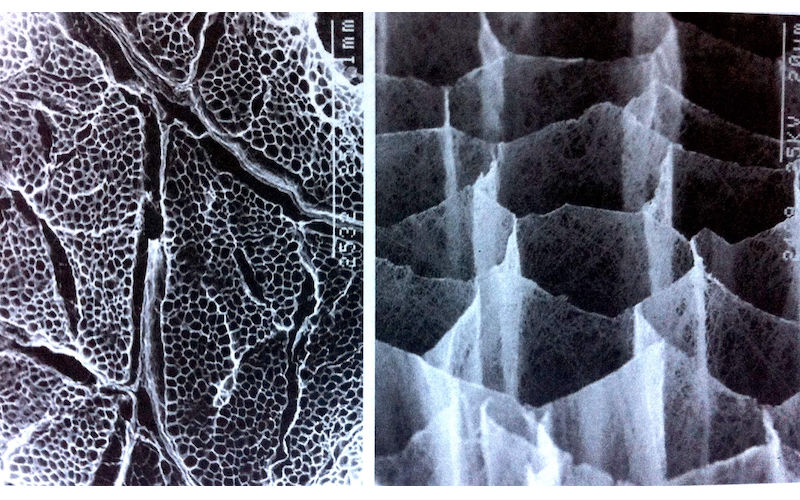
“A single-celled paramecium swims gracefully, avoids predators, finds food, mates and has sex, all without a single synapse. Of nerve there is no trace. But the cell framework, the cytoskeleton might serve.”
Sherrington 1951
Biology may seem somewhat senseless until viewed from an evolutionary perspective. The study of the extracellular matrix (ECM) is a growing field of research which has prompted much theoretical discussion amongst evolutionary and cellular biologists.
In this post, we will begin the story of the ECM with some evolutionary context, beginning with single celled life forms and progressing to complex specialised tissues within multicellular organisms – like us.
In basic terms, ECM is made inside cells and secreted by cells into their immediate surrounds. ECM enables the cell to act beyond its membrane and into its environment – sensing, gathering and defending.
Single cell microorganisms (like bacteria or the paramecium described by Sherrington in the quote above) contain a dynamic internal structural scaffold – the cytoskeleton. The cytoskeleton is a highly sophisticated network of microfilaments and microtubules that enable the cell to adjust its shape and physiology in response to physical and chemical changes in its immediate environment. Some regard the cytoskeleton as a ‘miniature musculoskeletal system’, connecting the cell membrane to internal organelles like the nucleus. This level of continuity means that changes at the cell membrane are communicated to the nucleus – this influences metabolic regulation and gene expression.

Evolutionarily more recent microorganisms have elaborated extracellular coats which connect to the cytoskeleton. This arrangement creates continuity between the microorganism and its environment, it also facilitates more effective communication, nutrient gathering and defence.
The ECM enables complex cell to cell continuity in a multicellular context and is regarded as a more recent evolutionary development of extracellular coats.

ECM constitutes connective tissue in all Metozoan organisms, including fish, birds, amphibians, reptiles and mammals. The majority of vertebrate ECM genes have come about through the duplication of pre-existing genes in ancestral vertebrates. ECM genes appear to be over-represented in the vertebrate genome, this suggests that ECM genes underpin the evolution of vertebrates.
Connective tissue is important to our experience of embodiment and forms a body-wide communication system. Connective tissue conveys mechanical forces directly to cells without the involvement of the neural or hormonal systems.
ECM has been likened to cosmological dark matter – as the stuff which holds many of the keys to understanding the organisational rules and informational flows which influence multicellular life.
FEATURED IMAGE:
Courtesy of Ian Purslow.
